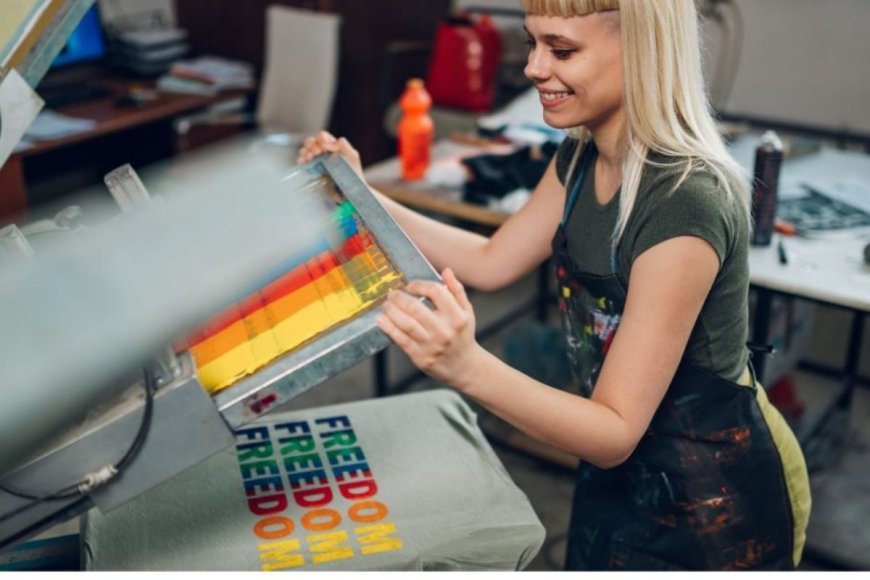Digital or Screen? A Guide to T-Shirt Print Methods

T-shirts have become more than just clothing—they're a way to share ideas, showcase designs, and create personal or business identity. Whether you're making merchandise, event wear, or personal fashion statements, how your design is printed plays a huge role in the final result. Among the most popular techniques used today are digital printing and screen printing.
Each method comes with its own style, process, and benefits. For instance, many local services offering T-shirt printing Anna nagar provide both options to suit different needs—from one-time personalized gifts to large orders for corporate events.
Let’s break down the difference between these two methods and help you decide which one is right for your next T-shirt project.
Screen Printing: Bold and Built for Bulk
Screen printing is one of the oldest and most reliable methods in the T-shirt industry. It involves creating a stencil (or screen) and using it to apply layers of ink onto the fabric. Every color in the design requires its own screen, so simpler designs are faster and more economical.
This method is known for producing vibrant, long-lasting colors that can withstand multiple washes. Because of the setup time involved, it's ideal for bulk orders. If you're printing 50 or more T-shirts with the same design, screen printing often delivers the best value.
However, it's not the best choice for small runs or highly detailed artwork. The process can become time-consuming and costly for low-quantity or multi-color prints.
Digital Printing: Crisp, Custom, and Flexible
Digital printing, also known as Direct-to-Garment (DTG) printing, uses inkjet technology to apply ink directly onto the T-shirt. It's like using a high-resolution printer—but for fabric. This method allows for more intricate designs, including gradients and photographs.
Digital printing shines in short-run orders and detailed designs. It's great for printing one or two unique T-shirts, making it a favorite for artists, start-ups, and personal custom wear. Plus, since there's no need for screen preparation, turnaround times can be much faster for small batches.
The downside? The colors may not pop as much on darker fabrics unless a pre-treatment is applied. Also, the durability might be slightly less compared to screen prints, especially with frequent washing.
What to Consider When Choosing a Method
Here are a few simple questions to help you pick the right printing method:
How many shirts do you need?
For 50 or more, screen printing is more cost-effective. For 1 to 10 pieces, digital printing is more practical.
What’s your design like?
Clean logos and simple artwork work well with screen printing. Detailed artwork, multiple colors, or photographic images are best handled digitally.
What type of fabric are you using?
Digital printing works best on 100% cotton. Screen printing is more versatile and suitable for a variety of blends and materials.
How quickly do you need the order?
Digital printing typically offers faster delivery for small quantities.
Quality, Texture, and Finish
The finish you get from screen printing feels slightly thicker, as the ink sits on top of the fabric. This adds a sense of depth and durability, especially for bold designs and logos.
Digital printing, on the other hand, has a softer feel because the ink is absorbed into the fabric. This makes the T-shirt more breathable and comfortable for daily wear. However, the colors may not be as vibrant on darker shades unless treated beforehand.
Both methods, when done professionally, offer excellent quality. It often depends on the skill and equipment of the printing service. Reliable T-shirt printers in Chennai often invest in modern tools and experienced hands to ensure crisp designs and long-lasting results.
-
Use screen printing when you:
-
Need to print in large quantities
-
Want solid, bold colors
-
Are printing on various types of fabric
-
Can allow more time for setup
-
Use digital printing when you:
-
Need just a few T-shirts
-
Want detailed images or multi-colored designs
-
Are working with tight deadlines
-
Prefer a softer, more lightweight feel
Final Thoughts
Both digital and screen printing offer fantastic ways to bring your T-shirt designs to life. Your final choice should be based on quantity, design complexity, time, and fabric. Whether you're printing for a business, a personal event, or a creative project, understanding how each method works helps you make the best decision.
So, whether you're placing a one-time order or preparing hundreds of shirts for an event, choosing the right method can make all the difference. With plenty of skilled printers and studios in and around Chennai, finding the right service is just a step away.
What's Your Reaction?



















































